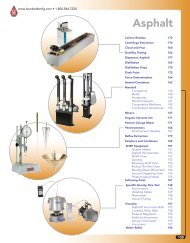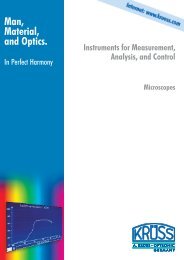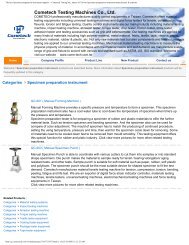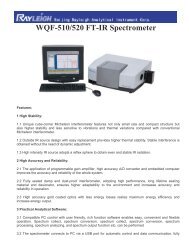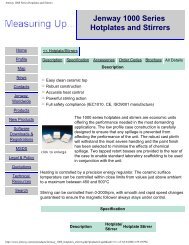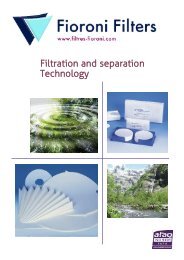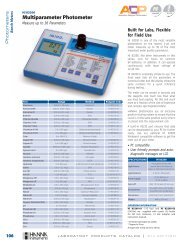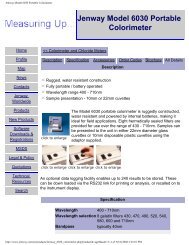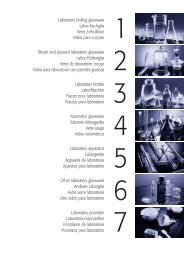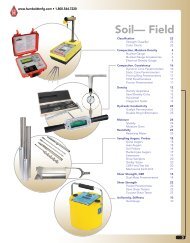Esco Labculture® Plus Class II Type A2 Biosafety Cabinet - Comlibris
Esco Labculture® Plus Class II Type A2 Biosafety Cabinet - Comlibris
Esco Labculture® Plus Class II Type A2 Biosafety Cabinet - Comlibris
You also want an ePaper? Increase the reach of your titles
YUMPU automatically turns print PDFs into web optimized ePapers that Google loves.
11<br />
A Guide To <strong>Biosafety</strong> And <strong>Biosafety</strong> <strong>Cabinet</strong>s<br />
<strong>II</strong>I. Proper Selection, Installation & Safe Use Of BSCs<br />
A. Selection of A Biological Safety <strong>Cabinet</strong><br />
A BSC should be selected primarily in accordance with the type of protection<br />
needed: product protection; personnel protection against Risk Group 1–4<br />
microorganisms; personnel protection against exposure to radionuclides and<br />
volatile toxic chemicals; or a combination of these. Table 3 shows which<br />
BSCs are recommended for each type of protection.<br />
Table 3. Biohazard Safety <strong>Cabinet</strong> Selection<br />
<strong>Type</strong> of protection BSC Selection<br />
Personnel Protection, microorganisms in Risk<br />
Groups 1-3<br />
Personnel Protection, microorganisms in Risk<br />
Groups 4, glove box laboratory<br />
Personnel Protection, microorganisms in Risk<br />
Groups 4, suit laboratory<br />
Product Protection<br />
Volatile radionuclide / chemical protection,<br />
minute amounts<br />
<strong>Class</strong> I, <strong>Class</strong> <strong>II</strong>, <strong>Class</strong> <strong>II</strong>I<br />
<strong>Class</strong> <strong>II</strong>I<br />
<strong>Class</strong> I, <strong>Class</strong> <strong>II</strong><br />
<strong>Class</strong> <strong>II</strong>, <strong>Class</strong> <strong>II</strong>I only if laminar<br />
flow included<br />
<strong>Class</strong> <strong>II</strong>B1, <strong>Class</strong> <strong>II</strong><strong>A2</strong> vented to the<br />
outside<br />
Volatile radionuclide / chemical protection <strong>Class</strong> I, <strong>Class</strong> <strong>II</strong>B2, <strong>Class</strong> <strong>II</strong>I<br />
Source: Laboratory <strong>Biosafety</strong> Manual. Second Edition (revised). Interim guidelines.<br />
World Health Organization. p29.<br />
Volatile or toxic chemicals should not be used in BSCs that recirculate exhaust<br />
air to the room, i.e. <strong>Class</strong> I that are not ducted to building exhaust systems,<br />
or <strong>Class</strong> <strong>II</strong>A1 or <strong>Class</strong> <strong>II</strong><strong>A2</strong> cabinets. <strong>Class</strong> <strong>II</strong> B1 cabinets are acceptable<br />
for work with minute amounts of volatile chemicals and radionuclides. A<br />
<strong>Class</strong> <strong>II</strong>B2 cabinet, also called a total exhaust cabinet, is necessary when<br />
significant amounts of radionuclides and volatile chemicals are expected to<br />
be used.



